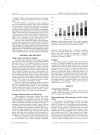Long-Term Surgical Outcome of 1057 Gastric GISTs According to 7th UICC/AJCC TNM System: Multicenter Observational Study From Korea and Japan
- PMID: 26469894
- PMCID: PMC4616782
- DOI: 10.1097/MD.0000000000001526
Long-Term Surgical Outcome of 1057 Gastric GISTs According to 7th UICC/AJCC TNM System: Multicenter Observational Study From Korea and Japan
Abstract
The aim of this study was to evaluate the treatment and prognosis of gastric gastrointestinal stromal tumors (GISTs) according to the 7th UICC/AJCC tumor-node-metastasis (TNM) system and the modified National Institutes of Health (NIH) risk classification. The study cohort consisted of 1057 patients with gastric GIST who underwent surgery between January 2000 and December 2007 from 13 institutions in Korea and 2 in Japan. Clinicopathologic characteristics, surgical outcomes, recurrence, and 5-year recurrence-free survival were evaluated.The mean age of the patients was 58.6 years. Thirty patients (2.8%) had distant metastasis preoperatively. Median tumor size was 4.0 cm. Complete resection (R0 resection) was achieved in 1018 patients (96.3%). Eighty-six patients (8.1%) had postoperative complications, and 2 patients (0.2%) died within 30 days after surgery. According to the 7th UICC/AJCC TNM system, 5-year recurrence-free survival rates were 95% to 99% in stage I, 94.1% in stage II, 74.1% in stage IIIA, 48.6% in stage IIIB, and 50.0% in stage IV patients. On survival analysis of high-risk patients according to the TNM system, the 5-year recurrence-free survival rates were 91.6% in stage II, 74.1% in stage IIIA, and 48.6% in stage IIIB patients. Independent factors of recurrence following surgery for gastric GIST were gender, tumor size, mitotic count, and radicality on multivariate analysis.The treatment outcome and prognosis of gastric GIST in Korea and Japan seem more favorable compared to those in Western countries. Compared to the modified NIH risk classification, the 7th UICC/AJCC TNM system is more reflective of the 5-year recurrence-free survival of patients with gastric GIST.
Conflict of interest statement
The authors have no funding and conflicts of interest to disclose.
Figures



Similar articles
-
Two staging systems for gastrointestinal stromal tumors in the stomach: which is better?BMC Gastroenterol. 2017 Dec 6;17(1):141. doi: 10.1186/s12876-017-0705-7. BMC Gastroenterol. 2017. PMID: 29207963 Free PMC article.
-
Clinical utility of the new American Joint Committee on Cancer staging system for gastrointestinal stromal tumors: current overall survival after primary tumor resection.Cancer. 2011 Nov 1;117(21):4916-24. doi: 10.1002/cncr.26079. Epub 2011 Mar 31. Cancer. 2011. PMID: 21456019
-
[Evaluation of the value of 7th editions of UICC-AJCC esophageal and gastric cancer TNM staging systems for prognostic prediction of adenocarcinoma of esophagogastric junction (Siewert type II)].Zhonghua Zhong Liu Za Zhi. 2014 Dec 23;36(12):916-21. doi: 10.3760/cma.j.issn.0253-3766.2014.12.008. Zhonghua Zhong Liu Za Zhi. 2014. PMID: 25623766 Chinese.
-
Consideration of tumor size improves the accuracy of TNM predictions in patients with gastric cancer after curative gastrectomy.Surg Oncol. 2013 Sep;22(3):167-71. doi: 10.1016/j.suronc.2013.05.002. Epub 2013 Jun 18. Surg Oncol. 2013. PMID: 23787074 Review.
-
Laparoscopic versus open resection of gastrointestinal stromal tumors of the stomach.Surg Endosc. 2013 May;27(5):1546-54. doi: 10.1007/s00464-012-2622-8. Epub 2012 Dec 12. Surg Endosc. 2013. PMID: 23233005 Review.
Cited by
-
Early experience of laparoscopic resection and comparison with open surgery for gastric gastrointestinal stromal tumor: a multicenter retrospective study.Sci Rep. 2022 Feb 10;12(1):2290. doi: 10.1038/s41598-022-05044-x. Sci Rep. 2022. PMID: 35145127 Free PMC article.
-
Challenge of gastro-intestinal stromal tumor management in low-income countries: example of Benin.World J Surg Oncol. 2022 Dec 1;20(1):247. doi: 10.1186/s12957-022-02709-9. World J Surg Oncol. 2022. PMID: 36451201 Free PMC article.
-
Unusual presentations, management and outcomes of gastric stromal tumors: a single-center case series.Ann Gastroenterol. 2021;34(1):26-32. doi: 10.20524/aog.2020.0540. Epub 2020 Oct 2. Ann Gastroenterol. 2021. PMID: 33414618 Free PMC article.
-
Retroperitoneal Extragastrointestinal Stromal Tumors Have a Poor Survival Outcome: A Multicenter Observational Study.Cancer Manag Res. 2020 Oct 23;12:10491-10504. doi: 10.2147/CMAR.S278612. eCollection 2020. Cancer Manag Res. 2020. PMID: 33122948 Free PMC article.
-
What is the appropriate duration of adjuvant imatinib mesylate treatment for primary gastrointestinal stromal tumors classified according to the strict definition of tumor rupture?Medicine (Baltimore). 2019 Jan;98(3):e14177. doi: 10.1097/MD.0000000000014177. Medicine (Baltimore). 2019. PMID: 30653164 Free PMC article.
References
-
- Hirota S, Isozaki K, Moriyama Y, et al. Gain-or-function mutations of c-kit in human gastrointestinal stromal tumors. Science 1998; 279:577–580. - PubMed
-
- Tran T, Davila JA, El-Serag HB. The epidemiology of malignant gastrointestinal stromal tumors: an analysis of 1,458 cases from 1992 to 2000. Am J Gastroenterol 2005; 100:162–168. - PubMed
-
- Bennett JJ, Rubino MS. Gastrointestinal stromal tumors of the stomach. Surg Oncol Clin N Am 2012; 21:21–33. - PubMed
Publication types
MeSH terms
LinkOut - more resources
Full Text Sources

